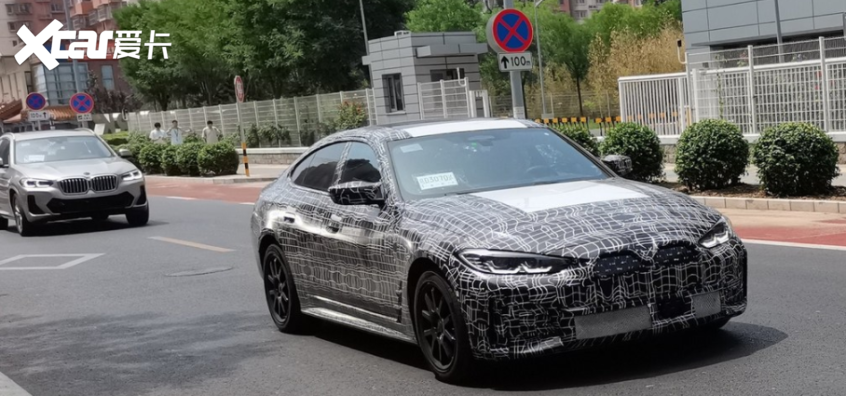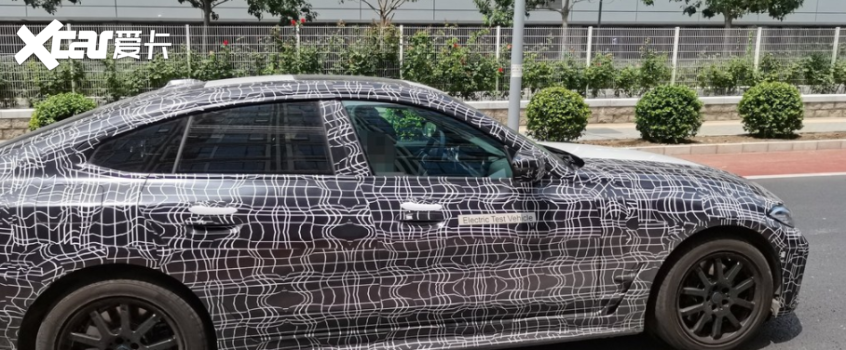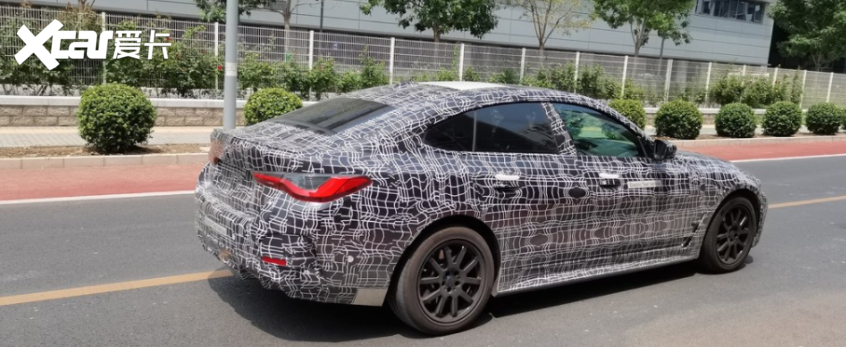Build the whole ecology of people, cars and homes! Xiaomi 澎湃 OS technology white paper released
[TechWeb] On December 7, 2023, Xiaomi held an OS experience communication meeting with the theme of "Fantasy". Jin Fan, vice president of the mobile phone department of Xiaomi Group, said that once Xiaomi 澎湃 OS was released, it caused a heated discussion and received wide acclaim from the media and users. At the communication meeting, Xiaomi 澎湃 OS R&D team introduced the aesthetic design and experience details of the new system to users in detail, and released a white paper on Xiaomi 澎湃 OS technology to the public, aiming to stimulate more creativity and cooperation by sharing these technological achievements and insights, promote the progress of the whole industry, and jointly build the future of "all people, cars and homes".

Reconfiguration of the bottom layer can fully release the performance of the equipment.
In 13 years, from 100 users to 1.175 billion cumulative users worldwide; From the absence of hardware to the ecological layout of more than 200 categories today-the era of the Internet of Everything, the complexity and huge number of operating system branches involved in equipment, and the barriers to ecological connection caused by different systems and protocols may not be as deep as Xiaomi’s experience. Thus, Xiaomi 澎湃 OS came into being. The project was launched in 2017, aiming at unifying all ecological devices through a set of integrated system framework, achieving the goals of optimal device performance, unified experience among devices and open connection.
The underlying core system of Xiaomi 澎湃 OS is a fusion of Linux and self-developed Xiaomi Vela, with excellent heterogeneous compatibility and precise and powerful system resource management capabilities, so that each device can exert its best performance. The bottom layer of Xiaomi 澎湃 OS supports more than 200 processor platforms and more than 20 common file systems, covering hundreds of equipment categories and thousands of SKUs. It can be flexibly configured, operated and deployed according to hardware-the compatible device RAM is as small as 64KB and as large as 24GB. Based on the principle that different hardware only configures necessary resources, and with the file deduplication and compression of the underlying IO technology stack, Xiaomi’s surging OS is naturally lightweight: on the mobile phone side, the system firmware occupation of Xiaomi’s surging OS can be as low as 8.75GB, which is far lower than that of competing products.

Scheduling is the soul of the system. The core system of Xiaomi 澎湃 OS has finer scheduling ability. By dynamically adjusting thread priority and dynamically evaluating task cycle, it can accurately command hardware and tasks in various complex and high-pressure scenarios, bringing the ultimate performance and power consumption. Using a mobile phone equipped with Xiaomi 澎湃 OS to run large-scale games has a more stable frame rate and lower power consumption performance compared with native Android or other deeply customized OS. On lightweight devices with limited computing power, Xiaomi 澎湃 OS has more obvious performance scheduling advantages: it supports splitting a task into multiple computing units for collaborative computing, which can maximize hardware performance. Not only that, Xiaomi 澎湃 OS has also reconstructed many technical modules such as file system, memory management, network system and graphics subsystem, which can effectively exert the hardware capabilities of various devices with great differences and bring the ultimate single device performance.
Cross-end Zhilian, let the connection enter the next era
Giving full play to single-ended performance is only the foundation. In the era of Internet of Everything, it is necessary to connect devices efficiently, but also to integrate the connected devices into a whole. To this end, Xiaomi 澎湃 OS has developed a cross-end interconnection framework, Xiaomi HyperConnect, on top of the core system to realize the real-time networking of ecological devices. Through the brand-new converged device center, users can see all the devices in the surrounding network and their current status, and realize active and fast device control. No matter at home, on the road or in the company, users can see that the devices connected around them move with the current scene and state.

Xiaomi 澎湃 OS makes all connected devices into a whole, and software and services can choose the most suitable hardware among all devices according to users’ needs. When using tablet and notebook for video conference, you can flexibly switch to the camera angle of the mobile phone; On the way to driving, you can even call the car camera on the mobile phone; When working outside, the tablet can call the mobile phone communication module to surf the Internet. Not only that, the applications currently used by users, the contents in the clipboard and focus notifications can also flow freely among connected devices according to the needs of users.
Active intelligence, so that devices can understand people’s minds and serve people.
Device interconnection and capability integration are only prerequisites. In order to achieve the ultimate goal of the Internet of Everything era and make devices actively serve people, strong intelligent lighting is needed. Xiaomi 澎湃 OS is equipped with a forward-looking AI subsystem, which supports the most advanced AI technology to land in the system and gives equipment intelligence. This time, the AI subsystem will support two AI highlight applications to land in Xiaomi 澎湃 OS.

Xiaomi HyperMind is the thinking center of Xiaomi’s whole equipment, which brings the device interconnection into the era of "active intelligence" for the first time in the industry, so that devices can truly understand people’s minds and take the initiative to serve people. It turns 820 million devices in more than 200 categories of Xiaomi Ecology into tentacles to perceive the world. It comprehensively uses the four perceptual abilities of environment, vision, hearing and behavior to learn the habits and preferences of different users, and actively implements them after acquisition, adjusting the devices around users to the state of users’ habits. For example, every time the user opens the smart door lock, the lamp in the living room will be turned on. After Xiaomi HyperMind learns this habit and obtains the user’s permission, the lamp can be automatically turned on every time the user opens the door. Xiaomi HyperMind truly solves the problems of complicated logic and high learning cost of traditional device interconnection, so that users can enjoy the convenience brought by device interconnection without understanding complex operation logic and trigger mechanism.
The big model is a hot technology in the field of AI today. Xiaomi 澎湃 OS fully embraces the big model of AI, enabling it to fully apply the system. Xiaoai input assistant allows users to quickly call the text creation ability of the big model of AI in the input method interface, such as generating speeches and summarizing articles. The well-received real-time subtitle function has been upgraded, which can transfer the real-time subtitles of video conferences to notes and intelligently refine the minutes of meetings; After the system photo album is combined with the AI big model, the AI picture searching ability is added. Users can find the desired pictures only by using daily communication sentences without accurate description, and also support the generation of AI photos based on the existing portrait photos in the photo album. The "Xiaomi Creation" App on the tablet adds an AI brush, which can transform the user’s graffiti into beautiful paintings. Not only the system application, but also the three-party application can release more potential after accessing the AI subsystem. In WPS, users can ask questions about the documents they take at hand and quickly understand the meaning; You can also use a sentence instruction to quickly generate PPT.

The extensive application of AI big model needs leading and efficient technical architecture as support. The AI subsystem of Xiaomi 澎湃 OS supports the deployment of large models to the device NPU, which improves the operating efficiency and reduces the power consumption of the device. Based on this, Xiaomi 澎湃 OS was able to support the running of Xiaomi self-developed model on the mobile phone side for the first time. Taking the large image model as an example, compared with the traditional CPU scheme, Xiaomi’s self-developed NPU scheme reduces the model size by 75%, the memory occupation by 75%, and the drawing time from 100 seconds to 5 seconds. The end-side image ability will soon be applied to the "Wen Sheng Tu" function of Xiao AI’s big model version and the "AI Tu Extension" function of album editing. Xiaomi will continue to embrace cutting-edge AI technology and bring users a truly intelligent life.
Global security, guarding every usage scenario of users.
Privacy security is the cornerstone of all experiences, and it is also the experience track for Xiaomi to continue to exert its strength. Xiaomi 澎湃 OS reconstructs the security and privacy architecture for the Internet age. Xiaomi’s self-developed TEE is the underlying foundation of the security subsystem, which is an isolated security operating system running on isolated hardware, specially used to process sensitive information to ensure the security of information. It covers the security functions of many system applications, such as face recognition, privacy password, screen lock password and so on. Not only core devices such as mobile phones, but also AIoT devices are supported. Xiaomi’s self-developed TEE is the first TEEOS in China to obtain the highest certification level EAL5+ certificate from China Network Security Review Technology and Certification Center (CCRC), which is also the highest security level of TEEOS at present.

Xiaomi 澎湃 OS security subsystem not only provides a unified security guarantee for each device, but also designs an interconnected security module for each device. Interconnection needs to ensure that every device in the network is trustworthy. Xiaomi 澎湃 OS allows devices to check each other through an interconnection security module based on TEE, and data transmission between devices is also encrypted end-to-end through TEE, thus ultimately ensuring the security of the whole network.
Xiaomi firmly believes that users have the right to know and control their privacy, and the privacy flare function pioneered by Xiaomi has also become the network access standard of the Ministry of Industry and Information Technology. Facing the era of the Internet of Everything, Xiaomi 澎湃 OS has upgraded its rights management ability to the ecological level, and provided functions such as rights management, sensitive internet reminders, sensitive internet records, etc., making the rights acquisition in the internet scene completely transparent to users and highly controllable by users.
The underlying reconstruction, cross-end intelligent, active intelligence, global security and open ecology, Xiaomi 澎湃 OS is undoubtedly the turning point of Xiaomi’s leap. The release of Xiaomi 澎湃 OS is a key step after the upgrade of Xiaomi’s technology strategy, marking the gradual improvement of its map of "people, cars and homes are all ecological". I believe that the launch of Xiaomi 澎湃 OS will definitely bring an unprecedented new experience to Xiaomi eco-users.


